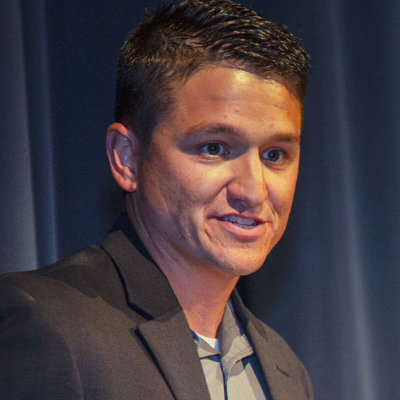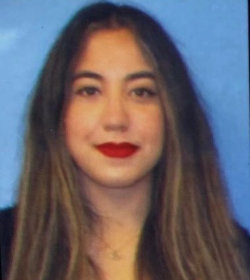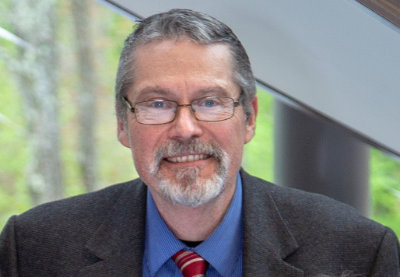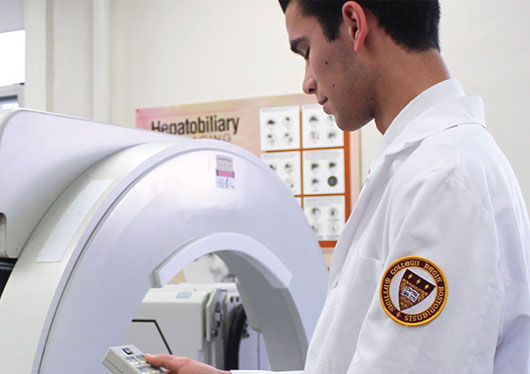Discovering Healthcare Technology with a Human Touch
“Nuclear Medicine Technologist.”

Even the title sounds daunting, the kind of profession that commands respect from a safe distance. At the very least, it seems solidly in the “left brain” column, a better fit for those with a science and technology orientation than the “soft skills” associated with patient care. Yet the way Regis College Assistant Professor Gary L’Abbe Jr. MHA RT(R)(N)(CT)CNMT, perceives the profession, the job clearly calls for ambidextrous aptitudes.
‘A Mix of Medical Imaging Sciences and the Human Body’
As program director of the medical imaging program, L’Abbe believes that “The role is much more of a split between technical learned skills and the softer people skills associated with patient care.” He describes most of the students in Regis’ Nuclear Medicine (BS) program as “hands- on learners [who] enjoy a mix between the medical imaging sciences and the human body.”

As a practitioner, Samar El-Khatib BS ’20 MRT, CNMT has a similar definition: “Technologist in [the] radiology world means a professional in patient care, manipulating state of the art diagnostic cameras and other equipment to obtain the best diagnostic images of the body area of concern, while at the same time providing compassionate care and listening to the patient’s needs.”
When Samar was growing up in Beirut, the idea of becoming a nuclear medicine specialist wasn’t even on her radar. At the age of 12, she aspired to become a journalist, writing articles about sports which were published in Arabic Lebanese newspapers.
“After a lot of research and reading about different types of possible injuries, their prevention, diagnosis and treatments, I got inspired by how incredible human anatomy and the body is, how it heals and the different invasive or noninvasive therapies available out there,” Samar recalled.
Regis’ Students’ High Pass Rate on Board Exams
When she was 20, Samar said that her dad abandoned their family, leaving them with no income or financial support. As the oldest, she felt that she had to change her focus to take care of her elderly mother and younger siblings. In 2017, Samar enrolled at the American University of Beirut to pursue medical imaging sciences. Her initial fear and self-doubt gave way to confidence with her first patient care interaction. In that moment, she said, “I knew for sure this will be my professional career moving forward and I had no doubts about it. Building this trust rapport between you and the patient, feeling that the patient is placing his health under your care with confidence in you was the most rewarding feeling.”
Interested in Nuclear Medicine?
Acceptance to the Nuclear Medicine Program. And a Scholarship
When she was considering programs in the U.S. the following year, Samar noticed the high pass rate on board exams and success with job placements at Regis. She also noted that Regis had one of the first programs that supported graduating with a dual modality and facilitated the path for it by including a computerized tomography (CT) course within their nuclear medicine course requirements. With her acceptance came the offer of a scholarship.

“I was lucky that Regis offered one of the best nuclear medicine technology programs in Boston, which lined up with what I wanted to pursue,” Samar wrote. “The hard work of Professor and Program Director Leonas Nalivaika to see all his students succeed and begin a strong professional career as well as the clinical coordinator continuous effort in getting students into the best teaching hospitals in Boston confirmed my expectations and easily exceeded my visions.”
Professor Nailvaika described Samar’s drive to excel as “phenomenal,” adding, “It is the determination as well as drive of our students to succeed which drives me to believe that they will. She proved me correct in her studies as well as clinical work.”
Excelling in Regis’ Nuclear Medicine Program
At Regis, Samar made the dean’s list every semester, participated in two distinguished honor societies, received numerous awards, and was published nationally. As a senator for the School of Health Sciences, she collaborated with Dean Laura Burke, ScD, MPH, to convey student concerns and suggest academic alternatives. At graduation, Samar received the Crimson and Gold Award for outstanding contributions on campus.
Interested in Nuclear Medicine?
From Student to Board Certified and Licensed
Now double board certified and licensed as a general medical radiologic technologist by the Texas Medical Board, in September, Samar joined Texas Health Resources as a nuclear medicine specialist. Proficient in three languages, she feels well equipped to work with patients from diverse cultural backgrounds.
“As a health care professional taking care of children, adults, elderly from various communities and with diverse conditions ranging from coronary artery diseases to pulmonary embolism, gastroparesis, hydronephrosis, etc. and finally cancer patients for the last couple of years, I have decided to further my career, prove my dedication to my patients and give back to the medical field,” Samar says.
“Being able to contribute to their nuclear medicine-CT departments and provide the best and most advanced available care to patients reminds me of how grateful and thankful I am to be a healthcare professional.”
Technology with a touch of psychology. Sound about right? Learn more about the Nuclear Medicine (BS) program.


